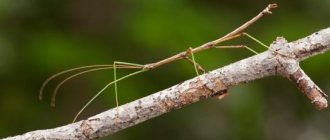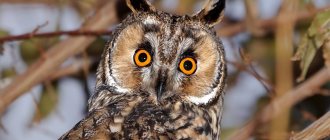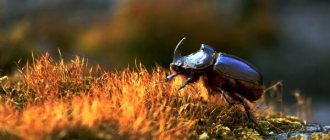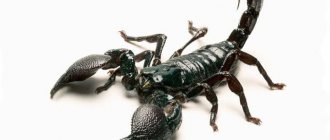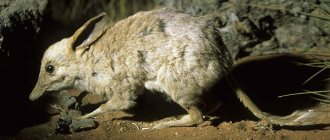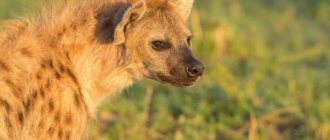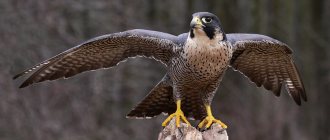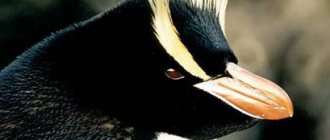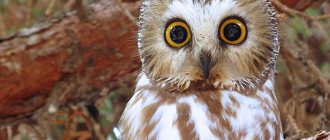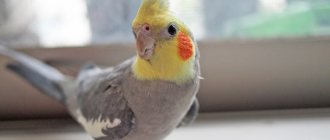Probably every resident of especially private houses has had to deal with an invasion of insects: cockroaches, ants, midges. You can also see centipedes with jointed antennae, modified forelimbs and quite beautiful colors. These strange animals can be terrifying at first. The first thought that arises is: are they dangerous and poisonous for humans? Indeed, scolopendras bite and emit poison, the entry of which into the body can lead to pain, illness and even poisoning. Who is the domestic scolopendra, why its bite is dangerous for humans, how to get rid of it using folk and chemical means, we will consider in more detail in this article.
general description
The giant centipede belongs to the genus of labiopods, the centipede family. These are nocturnal arthropods that spend most of their lives underground. They are loners, but if they encounter their own kind, they usually scatter in different directions.
In rare cases, they show aggression and bite each other, in which case the meeting ends in death for one of the parties. Females are considered especially poisonous.
At night, centipedes go out to hunt for invertebrates and their larvae; there are known cases of attacks on lizards, small birds, even bats. They kill the victim by plunging their poisonous jaws into its body and wrapping it around their long body.
The breeding season is late spring - early summer, usually these creatures lay eggs after mating, some species can reproduce without the participation of males.
Natural enemies in nature include cats, foxes, rats, rooks, geckos and snakes.
You should be careful with corn snake, tarantula spider, black widow, salamander, wolf spider, sea urchins, tarantulas, surgeonfish, as they can produce poison.
Why do they appear in the house?
There are two reasons why scolopendras may appear in the house:
- optimal living conditions (when it is warm and dry outside, and the houses are humid and damp);
- availability of food.
Centipedes often appear in those houses and apartments where there are basements, because it is always dark and high humidity. From there, in search of food, insects can climb into houses through cracks, and into apartments through pipes.
If a scolopendra is noticed in the house, then you should carefully inspect the home, since, most likely, the centipede came here in search of food. She usually hunts cockroaches, spiders and bedbugs.
Appearance
The body length of the giant scolopendra is on average 26 cm, it is divided into a head and a long body consisting of many (21-23) segments. On the head there are jaws equipped with poisonous spines.
Her eyes have a simple structure, so they see poorly; her vision is replaced by touch and smell. Each segment of the body has a pair of legs; the rear pair drags, clinging to clods of earth, thus helping with movement.
The color depends on the habitat: from lemon yellow to red-brown, in some countries the color can be green or blue.
The desire to have exclusive pets can be satisfied by Tasmanian devils, jungle cats, crocodiles, raccoons, lemurs, wolves, capybaras, manulas, monkeys, possums, roaches, jaguarundi, mongooses, caracals, and squirrels.
Traditional methods
Scolopendras are often found in private houses and cottages where families, children, and animals live. Fighting with chemicals is not always appropriate. Residents often use traditional methods, for example, hot cayenne pepper (powder), pouring it in places where insects accumulate. It is also advisable for them to be run over the pepper or eaten.
First of all, it is important to eliminate the food supply for scolopendra, i.e. remove ants, cockroaches, bedbugs and spiders so that there is nothing for feeding. And without it there will simply be nothing to feed on.
Of course, if large hordes appear, you can contact a specialized service. Professionals will quickly clear the house of uninvited guests by acting on them using thermal methods or chemical compounds containing synthetic pyrethroids. This way you can quickly process it. One procedure is enough for scolopendras to leave the house forever and not appear in the future.
Types of centipedes
Ringed - 14-17 cm in length, can be black, olive, orange and brownish. The species is distributed in Turkey, Spain, Italy, the south of France, Israel, Crimea, and North Africa.
Scolopendra alternans - up to 18 cm, lives in Central America, the Virgin and Hawaiian Islands, Cuba, Jamaica, Haiti, the Bahamas, the Dominican Republic, the Antilles, and northern South America. Color: black head, dark green body with a blue tint, other individuals have a red head, olive body.
Scolopendra heros - up to 20 cm, color: burgundy with brown, yellow-green, orange, red. They live in North America.
Scolopendra morsitans - up to 13 cm, orange, yellow or olive in color, head and limbs red, common in the USA and Algeria.
Scolopendra polymorpha - up to 13 cm, in pet stores it is presented as “Texas tiger”, “striped tiger”. Lives in North America, has a bright, varied color.
Scolopendra sp. "Robusta" - about 20 cm, inhabits the tropics of Peru, Brazil, Ecuador, orange-brown color.
Did you know? Ancient scientists such as Aristotle, Claudius Aelian, and Ulysses Androvandi described the scolopendra as a terrible sea monster with hairy nostrils the size of a whale.
Habitats
A description and photo of scolopendra can be found on the website. It is advisable to do this for those people who are going on trips to warm or tropical countries. It is there that the centipede and tropical scolopendra grow to gigantic sizes and pose a real danger to humans. Their body length reaches 26-30 cm. There are individuals up to 45-50 cm. Therefore, the question of where centipedes live is interesting for humans. They can be found on the islands of Jamaica, Trinidad, and in the north and west of South America.
Scolopendra
On a note!
These centipedes are usually distributed in the tropics and subtropics, as they are heat-loving. There are about 600 species of scolopendra and only a few varieties are found in Southern Europe, the Mediterranean regions, Transcaucasia, Central and South Asia, and the Far East.
Basically, real scolopendras are found in the upper layers of the soil, under stones, lying logs, in rock crevices and other secluded corners, where humidity is maintained during the hot time of the day, and no one can disturb them. A natural question arises as to whether the poisonous centipede can be found in places with colder climates and, if so, where this predatory insect lives in Russia. There are different types of insects, some of which live in the Russian Federation.
Maintenance and care
In captivity, centipedes live for about six to seven years, reproduce well, but it is advisable to remove the young, as cases of cannibalism have been observed.
Nutrition
Centipede diet:
- defrosted mice,
- crickets, grasshoppers, cockroaches;
- shrimp, scallops;
- small fish.
Important! At home, scolopendra is practically omnivorous, but it cannot be given more than five, for example, crickets per week, due to its digestive characteristics.
Arrangement of the terrarium
For the ward, you need to choose a terrarium that will significantly exceed its length, the approximate dimensions, not counting the height of the soil, are 30x40x30 cm. The soil is peat and sand, preferably the presence of living plants, you can place a couple of large stones and driftwood.
The top of the terrarium must be closed so that the pet does not escape. It is imperative to place a container of water; the depth should allow the centipede to submerge in the water, but not drown. Content temperature: +25 °С…+27 °С. To maintain the required humidity, part of the substrate must be moistened regularly.
Rules
Scolopendra is not a pet that can be caressed, stroked and squeezed. Without good eyesight, she may perceive you as an enemy and bite. Its bite is not fatal to humans, but very painful. Its venom causes swelling, temperature and fever symptoms. The mucus that it secretes from the glands is also poisonous and causes skin burns.
Important! Since the effect of the poison is destroyed under the influence of high temperatures and ethers, you should immediately treat the bite or burn with alcohol, you can disinfect it with a solution of potassium permanganate and apply a sterile bandage, after which you must see a doctor.
Relationships with a person
Having seen this creature in their apartment, quite a lot of people wonder why the domestic scolopendra is dangerous. In fact, these unpleasant-looking individuals are considered useful in some way. Thanks to their ability to kill insects, they can help you get rid of many pests.
On a note! By the way, the taste preferences of the flycatcher in most cases make it clear why it chose your home!
If we talk about whether the domestic scolopendra is dangerous for humans, then it is not capable of causing much harm. Living in residential areas, these creatures will feed exclusively on insects or small arthropods, without touching plants, food supplies, furniture, or wallpaper.
Since the flycatcher's jaws are quite weak, it is not capable of biting through our skin. And if she manages to do this, then there will be no particular harm - the concentration of the poison is too low, not only for humans, but also for pets. In addition, they bite extremely rarely and exclusively for the purpose of self-defense.
Features of reproduction
Scootigers breed in the warm season, when conditions are most favorable. The mating behavior of scolopendras is quite interesting.
Before contact, the female and male must feel each other using their antennae. Otherwise, the female may perceive the male as a victim and attack him.
The method of fertilization in centipedes is external-internal. It is important that the female must capture the male’s spermatophore as soon as possible so that it is in the air for a split second. To do this, the male pushes the female towards the spermatophore.
Flycatcher egg laying
Babies develop very quickly
The female lays eggs one at a time, but in total - about 60. After this, she covers the clutch with a sticky substance for protection. After hatching, it can be noted that the young individual differs from the adult in the number of pairs of legs - it has only 4 of them.
The number of pairs of legs increases with each molt to a final number of 15 pairs. In total, the scolopendra passes through five successive molts. The lifespan of flycatchers ranges from 3 to 7 years.
How to Avoid a Bite
Most often, people can get a bite from the ringed centipede in the forest, in the mountains, or on their own plots. She often likes to crawl in uncovered tents and hide from the heat in the clothes and shoes of tourists. But they themselves will never attack a person, only in case of danger to their life. As such, there are no safety measures against defeat. The insect is not afraid of repellent sprays, ointments and creams. Therefore, it is worth limiting her contact with humans by other methods. Since it is activated especially in the dark, it is necessary to close the doors to the home tightly, in the forest, zip up the tent even during daylight hours, there should be mosquito nets on the windows and doors. She is afraid of the light and will never go where there is light.
She only bites a person when she feels threatened. Therefore, when you notice a centipede on your clothes or body, the first rule is no sudden movements, shaking off or attempts to slam it down. You need to try to let her go away on her own, or carefully help her with something at hand. Tourists should carefully check their belongings and shoes before putting them on, for example, shake them. You should also inspect your backpack, tent, and sleeping bags.
The bites of the Crimean centipede, despite the pain and threatening appearance of the wound, usually pass without consequences. Doctors recommend immediately washing the bitten area with baby soap and treating with an antiseptic. To protect against an allergic reaction, you can take an antihistamine tablet (Tavegil, Suprastin) or apply ointment to the bite (hydrocortisone, Fenistil, Striptoderm).
Alcohol should not be consumed “for disinfection”, since the poison will spread faster and its effect will intensify.
Video
